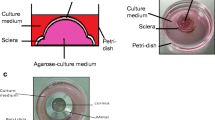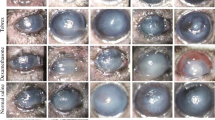Abstract
Pseudomonas aeruginosa is a typically opportunistic bacterium. Although it is widely distributed in human biology and produces numerous virulence-associated factors, P. aeruginosa does not infect human tissues unless the normal host defense mechanisms have been impaired. The bacteria does not exhibit tissue specificity, shown by many human pathogens; it infects tissues of diverse origins but only ones that have been damaged in some way. Why the affinity for damaged tissues by this organism remains unanswered. In this regard, several studies have examined P. aeruginosa adherence to unmasked extracellular matrix (ECM) following tissue damage in both human1,2 and experimental3 systems. Tissue damage may result in exposure of the basement membrane, which consists mainly of collagen (Type IV) and glycoproteins such as fibronectin (FN), laminin (LN), and heparan sulfate proteoglycan. P. aeruginosa has been shown to bind to soluble FN, but not to polymerized cellular or plasma FN,4 and to laminin.5 But simply being able to adhere or even being able to enter a host cell is not sufficient, and pathogenicity usually exhibits a multifactoral phenotype.6 Pili are the major adhesin by which P. aeruginosa interacts with mammalian host tissue,7 but studies have shown that pilusdeficient mutants of P. aeruginosa bind to respiratory mucus8 and to corneal epithelium9 as well as to other non-epithelial cell types.10 Binding to laminin, for example, may involve a noo-pilus adhesion from the bacterial outer membrane.5 It also has been shown that bacterial elastase and alkaline protease cleave soluble laminin,11 providing for tissue invasion and hemorrhagic tissue necrosis, as well as exposure of lipase-sensitive receptors, allowing enhanced bacterial bingiding to the corneal epithelium.12
Access this chapter
Tax calculation will be finalised at checkout
Purchases are for personal use only
Preview
Unable to display preview. Download preview PDF.
Similar content being viewed by others
References
Baltimore R, Christie C, Smith G. Immunohistopathological localization of Pseudomonas aeruginosa in lungs from patients with cystic fibrosis. Am Rev Respir Dis. 1989; 140: 1650–1661.
Philippon S, Streckert HJ, Morgenroth K. In vitro study of the bronchial mucosa during Pseudomonas aeruginosa infection. Virchows Arch A Pathol Anat Histopathol. 1993; 423: 39–43.
Hazlett L, Barrett R, Klettner C, Berk RS, Singh A. Pseudomonas aeruginosa: A probe to detail change with age in conical membrane receptors. Ophthalmic Res. 1991; 23: 141–146.
Woods DE, Strauss DC, Johnson WG, Bass JA. Role of fibronectin in the prevention of adherence of Pseudomonas aeruginosa to buccal cells. J Infect Dis. 1981; 143: 784–790.
Plotowski MC, Tournier J-M, Puchelle E. Pseudomonas aeruginosa strains possess specific adhesins for laminin. Infect Immun. 1996; 64: 600–605.
Bliska JB, Galan JE, Falkow S. Signal transduction in the mammalian cell during bacterial attachment and entry. Cell. 1993; 73: 903–920.
Irwin RT, Doig P, Lee KK, et al. Characterization of the Pseudomonas aeruginosa pilus adhesin: Confirmation that the pilin structural protein subunit contains a human epithelial cell-binding domain. Infect Immun. 1989; 57: 3720–3726.
Ramphal R, Koo L, Ishimoto S, Totten PA, Lara JC, Lory S. Adhesion of Pseudomonas aeruginosa pilindeficient mutants to mucin. Infect Immun. 1991; 59: 1307–1311.
Hazlett LD, Moon MM, Singh A, Berk RS. Analysis of adherence, piliation, protease production and ocular infectivity of several P. aeruginosa strains. Curr Eye Res. 1991; 10: 351–362.
Plotkowski MC, Saliba AM, Pereira SHM, Cervante MP, Bajolet-Laudinat O. Pseudomonas aeruginosa selective adherence to and entry into human endothelial cells. Infect Immun. 1994; 62: 5456–5463.
Heck LW, Morihara K, Abrahamson DR. Degradation of soluble laminin and depletion of tissue-associated basement membrane laminin by Pseudomonas aeruginosa elastase and alkaline protease. Infect Immun. 1986; 54: 149–153.
Gupta SK, Masinick SA, Hobden JA, Berk RS, Hazlett LD. Bacterial proteases and adherence of P. aeruginosa to mouse cornea. Exp Eye Res. 1996; 62: 641–650.
Bejarano PA, Langeveld JPM, Hudson BG, Noelken ME. Degradation of basement membranes by Pseudomonas aeruginosa elastase. Infect Immun. 1989; 57: 3783–3787.
Wu X, Kurpakus MK, Hazlett LD. Some P. aeruginosa pilus-binding proteins of human corneal epithelium are cytokeratins. Curr Eye Res. 1996; 15: 782–791.
Hobden JA, Gupta SK, Masinick SA, Wu X, Kernacki KA, Hazlett LD. Topically applied antibodies against host corneal receptors prevent perforation in experimental Pseudomonas aeruginosa keratitis. Immunol Cell Biol. 1996; 74: 258–264.
Giron JA, Lange M, Baseman JB. Adherence, fibronectin binding, and induction of cytoskeleton reorganization in cultured human cells by Mycoplasma penetrans. Infect Immun. 1996; 64: 197–208.
Rosenshine I, Donnenberg MS, Kaper JB, Finlay BB. Signal transduction between enteropathogenic Escherichia coli (EPEC) and epithelial cells: EPEC induces tyrosine phosphorylation of host cell proteins to initiate cytoskeletal rearrangement and bacterial uptake. EMBO J. 1992; 11: 3551–3560.
Hook M, Switalski L. Interaction of pathogenic microorganisms with fibronectin. In: Mosher DF, ed. Biology of Extracellular Matrix: A Series. Fibronectin. London: Academic Press; 1989.
Fleiszig SM, Zaidi T, Preston MJ, Grout M, Evans DJ, Pier GB. Relationship between cytotoxicity and corneal epithelial cell invasion by clinical isolates of Pseudomonas aeruginosa. Infect Immun. 1996; 64: 2288–2294.
Pruss RM, Nirsky R, Ruff MC, Thorpe R, Dowding AJ, Anderton BH. All classes of intermediate filaments share a common antigenic determinant defined by a monoclonal antibody. Cell. 1981; 27: 419–429.
Author information
Authors and Affiliations
Editor information
Editors and Affiliations
Rights and permissions
Copyright information
© 1998 Springer Science+Business Media New York
About this chapter
Cite this chapter
Hazlett, L.D., Masinick, S. (1998). Binding of a Cytopathic or an Invasive Strain of p. Aeruginosa to Cytoskeletal, Basement Membrane, or Matrix Proteins of Wounded Cornea is Similar and does not Rely on Interaction with Actin Filaments. In: Sullivan, D.A., Dartt, D.A., Meneray, M.A. (eds) Lacrimal Gland, Tear Film, and Dry Eye Syndromes 2. Advances in Experimental Medicine and Biology, vol 438. Springer, Boston, MA. https://doi.org/10.1007/978-1-4615-5359-5_80
Download citation
DOI: https://doi.org/10.1007/978-1-4615-5359-5_80
Publisher Name: Springer, Boston, MA
Print ISBN: 978-1-4613-7445-9
Online ISBN: 978-1-4615-5359-5
eBook Packages: Springer Book Archive




